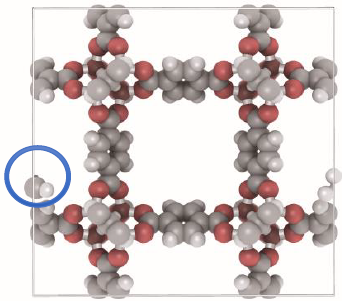IRMOF-1 for chemical sensing based in optical fibers
Ruben Fritz Universidad de Santiago de Chile, Santiago, Chile.
Rubén A. Fritz (a), Felipe Herrera (a,b)
(a) Universidad de Santiago de Chile, Santiago, Chile.
(b) Millennium Institute for Research in Optics MIRO, Chile.
Materials with optical properties suitable for portable, reusable, and non-destructive chemical sensors with high specificity are of great interest for the development of technology to monitor and detect chemical compounds of interest. Metal-organic frameworks (MOFs) are a promising material for optical sensing, the porous allows the adsorption of molecules, and upon loading their optical properties such as dielectric function change can be exploited for sensing purposes [1–3]. Metal-organic frameworks are extraordinary crystalline materials with an extensive list of properties and applications in several sciences. Their structure is formed by organics molecules as linkers and metal as nodes, in a modular way creating a network that in some cases generates pores that can adsorb other chemical compounds. The combinatorial ensemble of structures from their constitutive parts creates almost an infinite number of possible combinations and a very rich chemical space, that is extremely difficult to explore solely by experiments. Here we present a computational approach to study the changes in the optical properties of the IRMOF-1 upon loading of methane. The aim of this work is to set the basis for a computational filter and characterization of MOFs for chemical sensing purposes.

Figure 1. IRMOF-1 structure, a methane molecule inside the pore ( blue circle).
[1] C. Zhu, R. E. Gerald, and J. Huang, Metal-Organic Framework Materials Coupled to Optical Fibers for Chemical Sensing: A Review, IEEE Sensors Journal 21, 19647 (2021).
[2] C. Zhu, R. E. Gerald, Y. Chen, and J. Huang, Metal-Organic Framework Portable Chemical Sensor, Sensors and Actuators B: Chemical 321, 128608 (2020).
[3] C. Zhu, J. A. Perman, I. I. Rex E. Gerald, S. Ma, and J. Huang, Chemical Detection Using a Metal–Organic Framework Single Crystal Coupled to an Optical Fiber, ACS Applied Materials & Interfaces (2019).